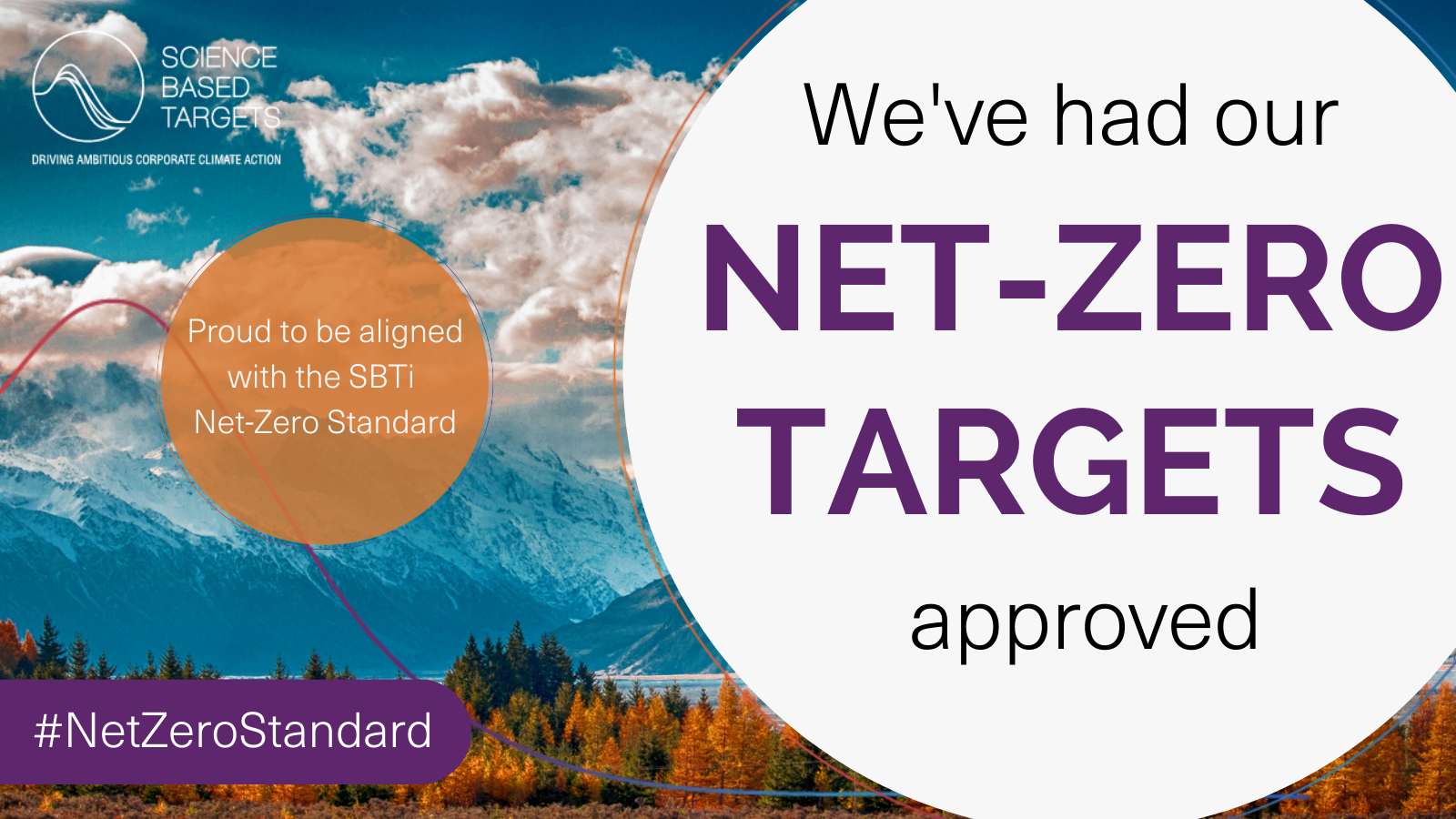July 11, 2025
Nilfisk’s Net-Zero Target approved by SBTi
Validation reinforces the company’s commitment to climate action, aligning with best practice and customer expectations
Five years ago, Nilfisk committed to well below 2.0⁰C aligned emissions reduction targets for 2030 — placing the company among the early decarbonization leaders in its industry. Now, the Danish manufacturer of professional cleaning equipment is demonstrating its continuous commitment to ambitious climate action by updating its near-term 2030 target to align with a 1.5°C pathway and committing to achieve Net-Zero by 2040.
These targets have now been officially validated by the Science Based Targets initiative (SBTi), confirming that Nilfisk’s ambition meets the latest and most rigorous global climate standards.
“Despite ongoing market turbulence, global warming is relentless, and our customers are increasingly requesting ambitious climate targets from us,” says Malene Thiele, VP, Nilfisk Global ESG & Sustainability.
In 2024, Nilfisk delivered significant emissions reductions in all three scopes, leaving the company well-equipped for the next ambition-level.
A value driver for customers
Thiele emphasizes that committing to a Net-Zero target is not only beneficial for the climate but also serves as a value driver for customers.
“Decarbonization is a prerequisite for many of our larger customers, and we need to help them achieve their ambitious climate goals by offering low-emitting products. Additionally, investing in product energy efficiency allows us to reduce the total cost of ownership for our customers,” she explains, pointing to Nilfisk’s next-generation products — such as the SC550 or CS7500 — that consume less energy during use.
Enhancing competitiveness
Nilfisk’s commitment to a 2040 Net-Zero target helps secure a competitive edge in a rapidly evolving business landscape.
“While 2040 may seem far away, establishing such a long-term target is essential for driving continuous progress toward sustainability. To meet this target, we must stay committed to incorporating cutting-edge technologies and sustainable practices into our operations. Achieving our Net-Zero ambition by 2040 will be a remarkable accomplishment for Nilfisk — not only reducing our emissions but also driving innovation, cutting costs, and enhancing our competitiveness,” says Thiele.
The Net-Zero target was approved by Nilfisk’s Board of Directors in March 2025 following a comprehensive feasibility study conducted in partnership with Schneider Electric. The target was submitted to SBTi in April 2025 and validated in June 2025.
What’s new?
With the Net-Zero target, Nilfisk’s Scope 1 and 2 emissions goal has been changed from reducing absolute emissions by 35% by 2030 (from a 2019 baseline) to 50.5% by 2030 from a 2021 baseline — and ultimately by 90% by 2040.
Nilfisk’s Scope 3 emissions target has been updated from an intensity-based reduction to an absolute reduction of 42% by 2030 and 90% by 2040, also from a 2021 base year. In addition, the target now covers both emissions from the use of sold products and purchased goods and services — two of the most material categories in Nilfisk’s value chain.
How will Nilfisk reach the target?
Scope 1 and 2 emissions (emissions from operations and production) will be reduced through:
- Electrification of the global vehicle fleet
- Decarbonization of manufacturing sites through renewable electricity
- Continued energy efficiency improvements
- Moving to more energy-efficient buildings
- Benefiting from wider grid decarbonization
Scope 3 emissions (emissions from products and materials purchased) will be reduced by:
- Increasing product energy efficiency
- Ensuring compatibility with alternative energy sources
- Utilizing low-carbon and recycled materials
Responding to customer demand
With this target, Nilfisk is investing in what customers ask about most. Approximately 9 out of 10 customer inquiries relate to the environmental aspect of ESG — particularly climate and emissions.
Between 2023 and 2024, sustainability-related customer inquiries increased by 70%, and by mid-2025, Nilfisk had already surpassed the full-year total from 2024. About one-third of these inquiries now relate to product emissions specifically.
To support this growing need, Nilfisk has launched a CO₂ calculator that enables customers and sales teams to access product-level emissions data based on the company’s SBTi targets.
Explore the CO₂ calculator here.
Press contact
Nynne Jespersen Lee
Head of Group Communications
T: +45 4231007
E: njespersen@nilfisk.com
About Nilfisk
Nilfisk was founded in 1906 by Danish engineer P.A. Fisker. Today, the company is a world-leading global provider of professional cleaning equipment and services. More than 90% of sales are to professionals, while the remainder of the business covers floorcare equipment, vacuum cleaners, and high-pressure washers for consumers. Nilfisk’s products and services are sold in more than 100 countries and produced at eight manufacturing sites around the world. In 2024, Nilfisk generated revenue of 1,027.9 mEUR and employed approximately 4,800 people. The largest markets are the USA (28% of revenue), followed by Germany, France, Denmark, and the UK.
The targets approved by SBTi
Overall Net-Zero Target: Nilfisk Holding A/S commits to reach net-zero greenhouse gas emissions across the value chain by 2040.
Near-Term Targets: Nilfisk Holding A/S commits to reduce absolute scope 1 and 2 GHG emissions 50.5% by 2030 from a 2021 base year. Nilfisk Holding A/S also commits to reduce absolute scope 3 GHG emissions from purchased goods and services and use of sold products 42% within the same timeframe.
Long-Term Targets: Nilfisk Holding A/S commits to reduce absolute scope 1 and 2 GHG emissions 90% by 2040 from a 2021 base year. Nilfisk Holding A/S also commits to reduce absolute scope 3 GHG emissions from purchased goods and services and use of sold products 90% within the same timeframe.
